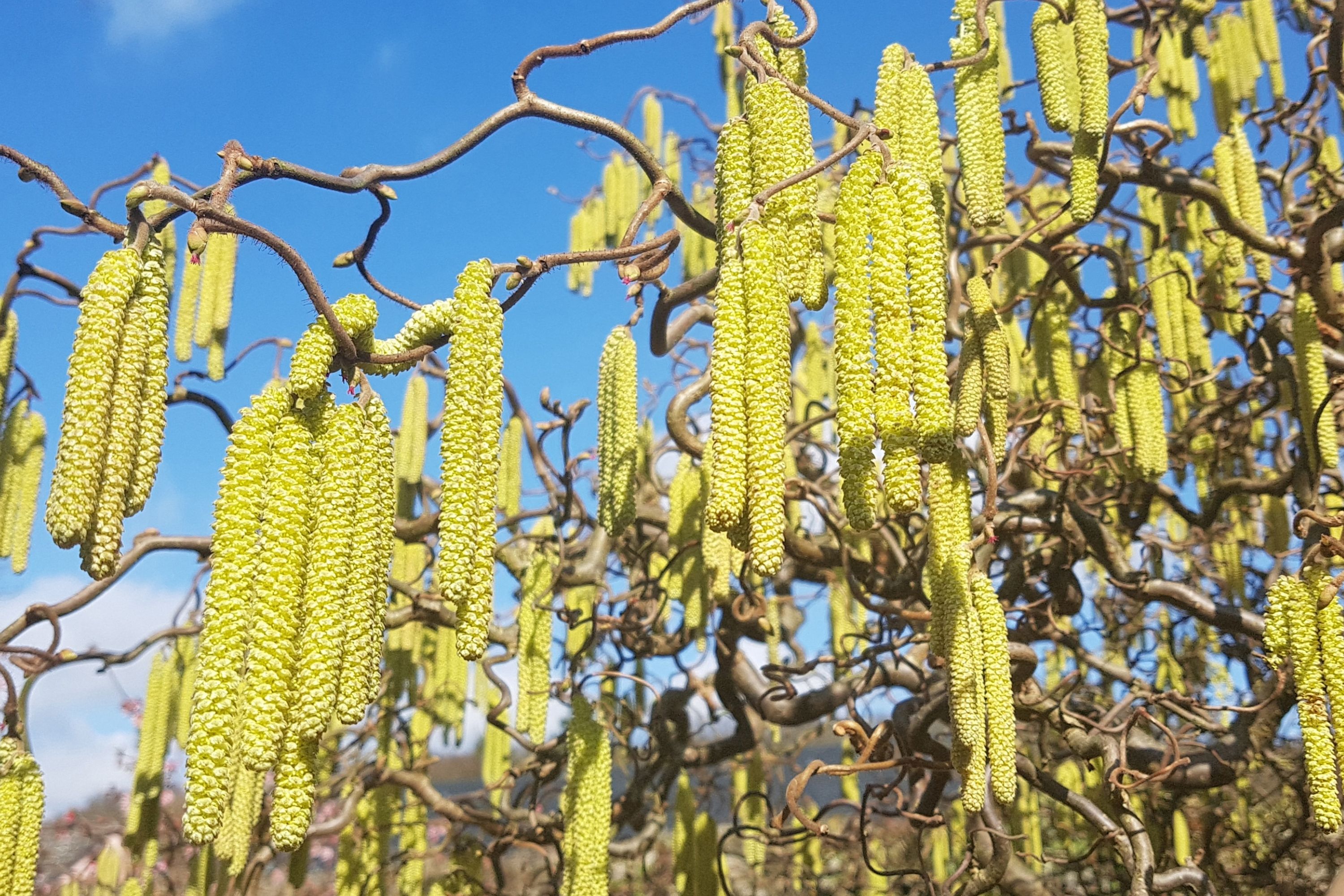Hazelnut
(Corylus avellana)

Description
Corylus avellana, commonly known as the European Hazel or Hazelnut, is a deciduous shrub native to Europe, western Asia, and northern Africa. It belongs to the family Betulaceae and is one of the oldest cultivated plants, dating back to prehistoric times. This plant has been used for food, medicine, and fuel for thousands of years, and its uses continue to expand today. Description Corylus avellana typically grows to a height of 3-8 meters and a width of 3-4 meters, but it can grow up to 15 meters in ideal conditions. The leaves are simple, alternate, and ovate-shaped with a serrated edge. They are green in color and turn yellow in the autumn. The flowers are wind-pollinated and appear in early spring before the leaves. They are small, yellow, and appear in catkins, which are cylindrical clusters of flowers that hang down from the branches. The fruit is a nut, enclosed in a woody involucre, which is called a husk or a cupule. Distribution and Habitat Corylus avellana is native to Europe, western Asia, and northern Africa, where it grows in a variety of habitats, including woodlands, hedgerows, and rocky slopes. It prefers well-drained soils and can tolerate a wide range of pH levels. It is hardy in USDA zones 4-8, which means it can tolerate temperatures down to -30°C. Uses Food The most well-known use of Corylus avellana is as a food source. The nuts are edible and are used in a variety of dishes, including desserts, sauces, and spreads. They are also eaten raw as a snack. Hazelnuts are a good source of protein, fiber, and healthy fats, as well as vitamins and minerals such as vitamin E, magnesium, and potassium. Medicine Corylus avellana has been used in traditional medicine for centuries. The nuts are used to treat a variety of ailments, including coughs, colds, and digestive disorders. They are also used topically to treat wounds and skin irritations. The leaves and bark are also used medicinally, with the bark being used to treat diarrhea and the leaves being used to treat fever. Landscaping Corylus avellana is also used in landscaping as a shrub or small tree. It is a popular choice for hedgerows, as it grows quickly and provides a dense screen. It is also used in mixed borders and as a specimen plant. Fuel In the past, Corylus avellana was used as a fuel source. The wood is hard and dense and burns slowly, making it ideal for fuel. However, today it is rarely used for this purpose due to its value as a food crop. Propagation Corylus avellana is propagated through seed or cuttings. The nuts are collected in the autumn when they are ripe and are planted immediately. Cuttings can be taken in the winter when the plant is dormant. The cuttings are dipped in rooting hormone and planted in a well-draining soil. Corylus avellana is a fast-growing plant and can reach maturity in 5-7 years. Pests and Diseases Corylus avellana is susceptible to a variety of pests and diseases. The most common pests include aphids, mites, and caterpillars. The most common diseases include bacterial blight, verticillium wilt, and eastern filbert blight. To prevent these problems, it is important to maintain good plant hygiene and to prune the plant regularly. Conclusion Corylus avellana is a versatile plant with a long history of use. It is a valuable food crop.
Taxonomic tree:







